If you’re planning a visit to Tokyo, don’t miss out on the opportunity to explore Ueno. Situated in the Taito Ward, Ueno is a charming district renowned for its rich cultural sites and vast public parks. I usually add Ueno to any first timers Tokyo itinerary.
Ueno Park, in particular, is a must-visit destination, offering a multitude of attractions, including remarkable museums, historical temples, and the much-loved Ueno Zoo, which is home to pandas and other rare animals. Plus, if you’re like me and love an unusual date, you’ll love renting a swan shaped boat in Ueno to paddle around the lake.
Ueno is also famous for its breathtaking cherry blossoms and bargain shopping (in Ameyoko), drawing both locals and travellers to experience its unique charm.
Embark on an unforgettable adventure using our comprehensive guide to the best things to do in Ueno.
Table of Contents
- What is Ueno Park?
- Getting to Ueno Park
- Things to do in Ueno Park
- Explore the Tokyo National Museum
- Hanazono Inari Shrine
- Look for the Moon at Kiyomizu Temple
- Travel back in time at the Toshogu Shrine
- Find your luck at Bentendo Temple
- Rent a swan shaped pedal boat at Shinobazu Pond
- Visit the Pandas and Polar Bears at Ueno Zoo
- Step back in time at the Shitamachi Museum
- Wander around the Ameyoko Shopping Street
- View Cherry Blossoms at Ueno
- Visit More Museums
- National Museum of Western Art
- National Museum of Nature and Science
- Best hotels near Ueno Park
- Ueno Park Guide Map
- Frequently Asked Questions
What is Ueno Park?
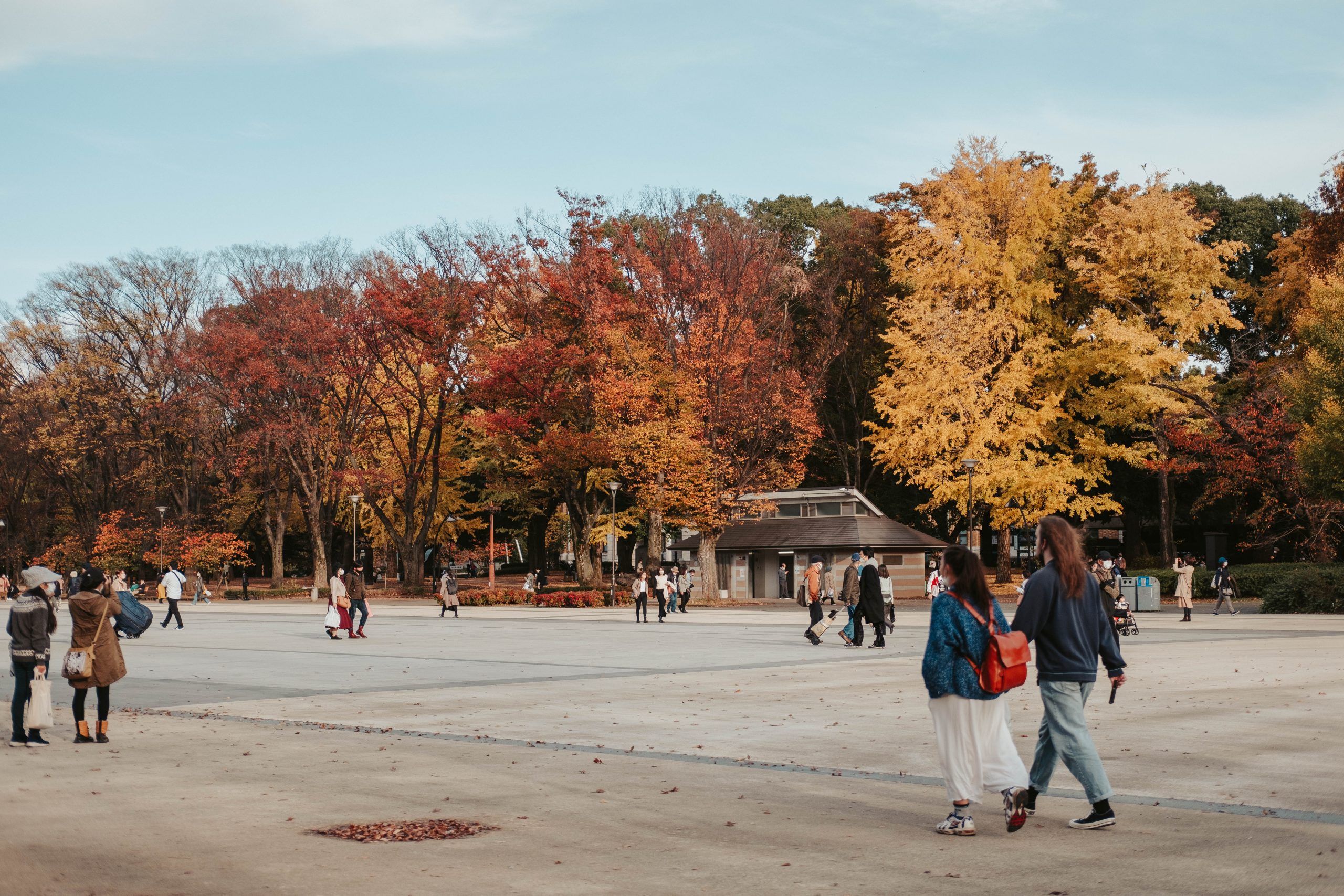
Ueno Park is the most popular park in Tokyo. The park was established in 1873, after much deliberation, as various proposals were put forward to turn the site into a school or hospital. This was as a result of pressure put by doctors who insisted that a public park is necessary for people to find relaxation. Ueno Park was created following Western examples, just one year after the foundation of Yellowstone Park, which is known to be the first national park.
The official name of Ueno Park is “Ueno Onshi Kōen” which means “Ueno Imperial Gift Park” given to the park in honour of the marriage of Emperor Taishō in 1924.
Today, Ueno Park receives over 10 million visitors annually. It’s one of the most popular tourist attractions.
Getting to Ueno Park
Ueno Park is located in the Northern area of Tokyo, between Asakusa and Bunkyo City. The park has its own station, called the Ueno Station. The easiest to get to Ueno Park is by taking the subway to Ueno Station.
In the table below, you can see the lines and travel time from the larger subway stations to Ueno Station. See additional info about the Tokyo subway.
| Station | Line | Travel Time |
|---|---|---|
| Tokyo Station | Keihin-Tōhoku Line or Ueno-Tokyo Line | 5 mins |
| Asakusa Station | Hibiya Line | 18 mins |
| Ginza Station | Ginza Line | 12 mins |
| Shibuya Station | Ginza Line | 36 mins |
| Shinjuku Station | Shinjuku Line then Hibiya Line | 25 mins |
There are multiple ways to enter the park. If you arrive to Ueno Station, you can enter the park directly through the station building. Follow the signs for “Park Gate” and “Keisei Line”, once outside the station building, cross the pedestrian crossing and follow the road into the park.
Alternative entrances are at Nezu Station (5 mins walk to the entrance, close to the Shinobazu Pond), and Uguisudani Station, this one drops you off just behind the Tokyo National Museum.
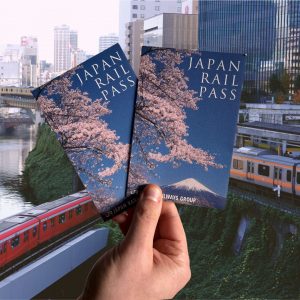
Japan Rail Pass
The optimal way to explore Japan is with a rail pass that is available for durations of 7, 14, or 21 days, offering unlimited travel across the country. Shinkansen included!
Things to do in Ueno Park
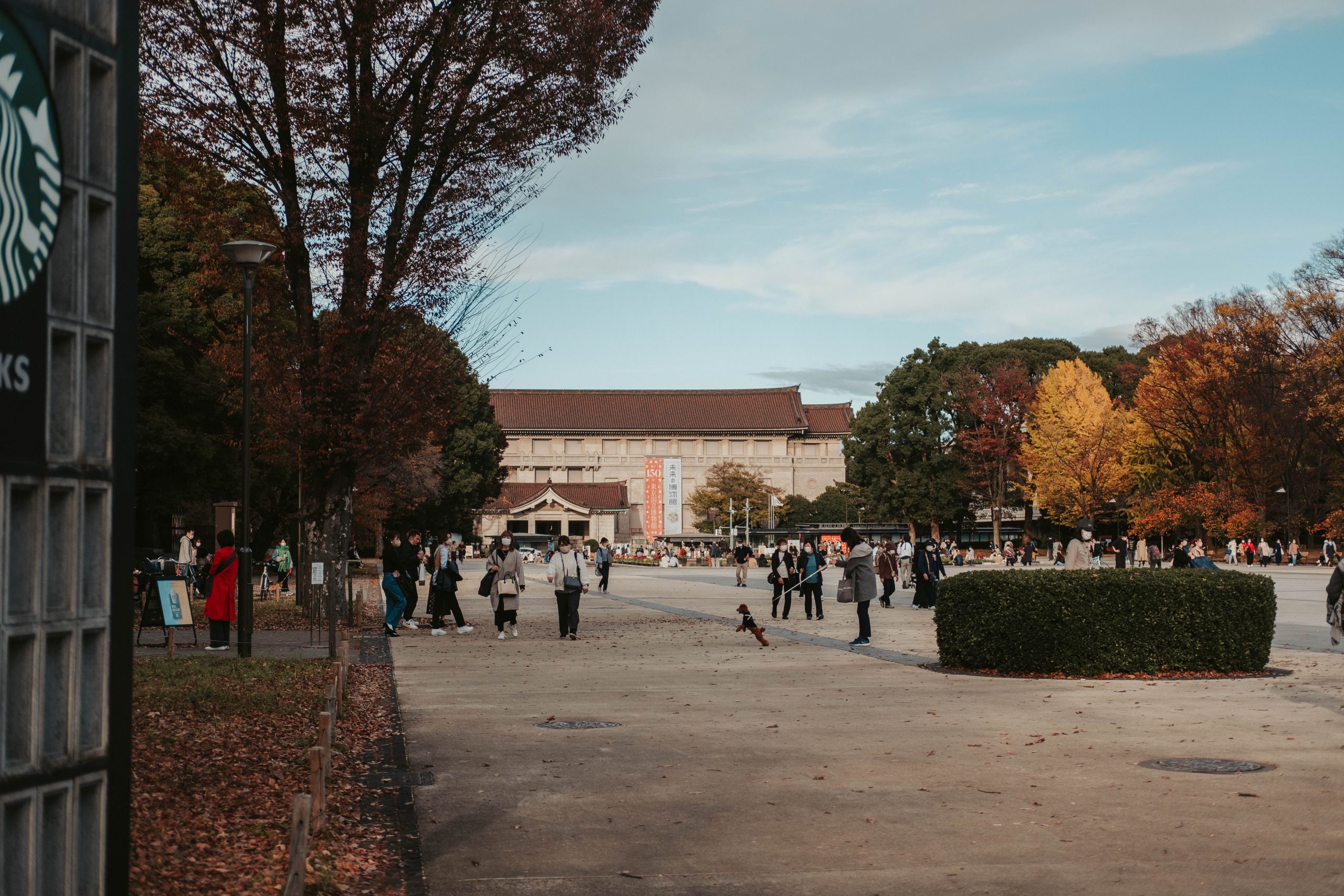
Ueno Park is home to some of the most famous cherry trees, perfect for hanami festivals, as well as many Ginkgo biloba trees. Overall, the park has over 8800 trees. You will find galleries, museums, temples, a pond, and even a zoo here. There are many things to do in Ueno Park, including indulging in the street food and relaxing during the sunset.
The Ueno Park is open 24/7. The museums open at 9am-9.30am and close at 5pm-5.30pm. Remember that most museums are closed on a Monday. Ueno park tends to get a little busy in the afternoon as many people come here to relax after work, so I recommend visiting early. Outside of Ueno Park there are stalls with street food and also many streets filled with traditional and international restaurants.
Explore the Tokyo National Museum
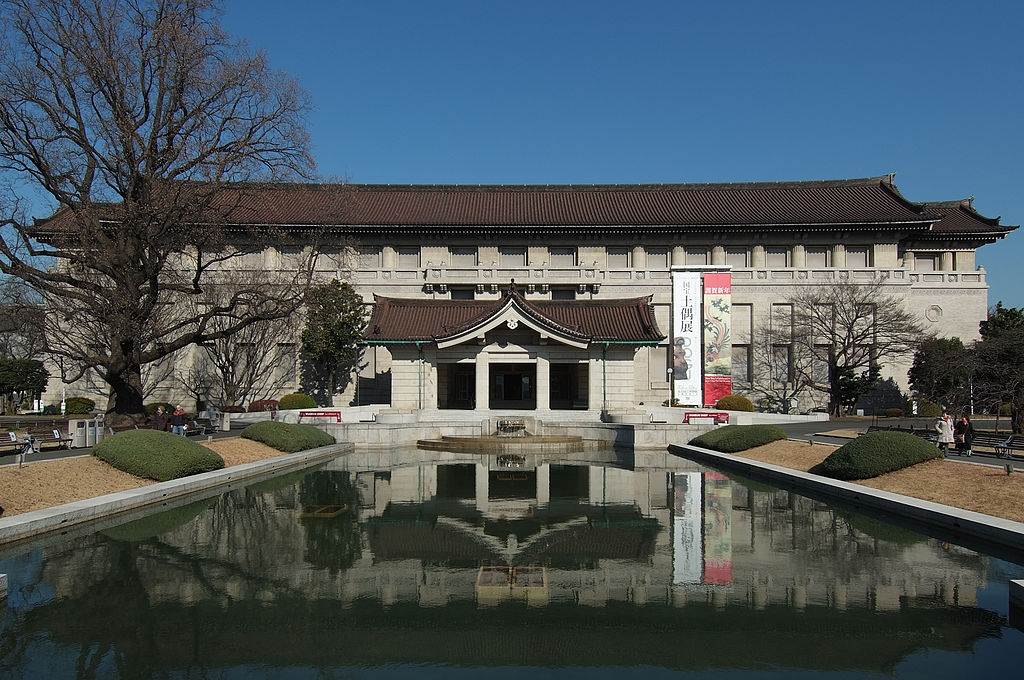
The Tokyo National Museum, established in 1872, is Japan’s oldest and largest museum, and it’s one of the top things to do in Tokyo. Home to an extensive collection of cultural artefacts and national treasures. It consists of six buildings, each showcasing different aspects of Japanese and Asian history, art, and culture.
The six buildings within the museum complex each showcases a unique collection of art:
- Honkan – Collections of Japanese art from prehistory to late 19th century
- Heiseikan – Special, temporary exhibitions
- Toyokan – Collections of Chinese, Korean, and Asian art
- Horyuji Homotsukan – Collection of relics from the Horyu Temple in Nara
- Hyokeikan – Closed to the public except during special exhibitions
- Kuroda Kinenkan – Collection of works by Western-style artist Kuroda Seiki
The museum’s vast collection includes over a hundred thousand items, such as pottery, sculptures, textiles, and paintings, many of which are designated as Important Cultural Properties or National Treasures of Japan.
Expect to spend several hours exploring the Tokyo National Museum, the various galleries and exhibitions, with each building providing a wealth of information and insight into the history and culture of Japan and other Asian countries. The TNM is the best place to go in Ueno for history enthusiasts and anyone looking to gain a deeper understanding of Japanese customs and traditions.
Find unique souvenirs and gifts inspired by the museum’s collections in the museum shop.
Entrance fee to the museum is 1000 yen, or free for anyone under 18 or over 70. More information on the official TNM website.
Hanazono Inari Shrine
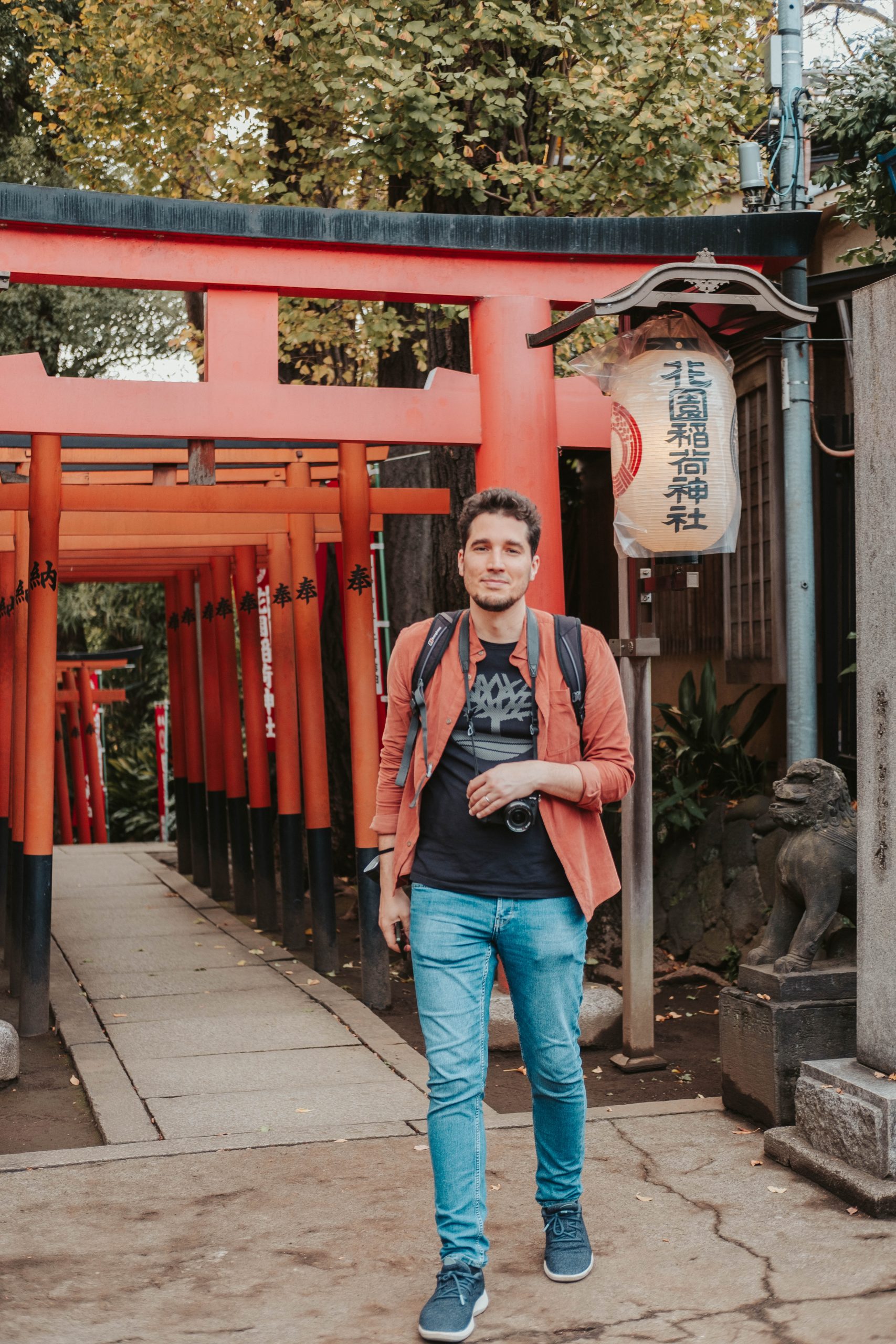
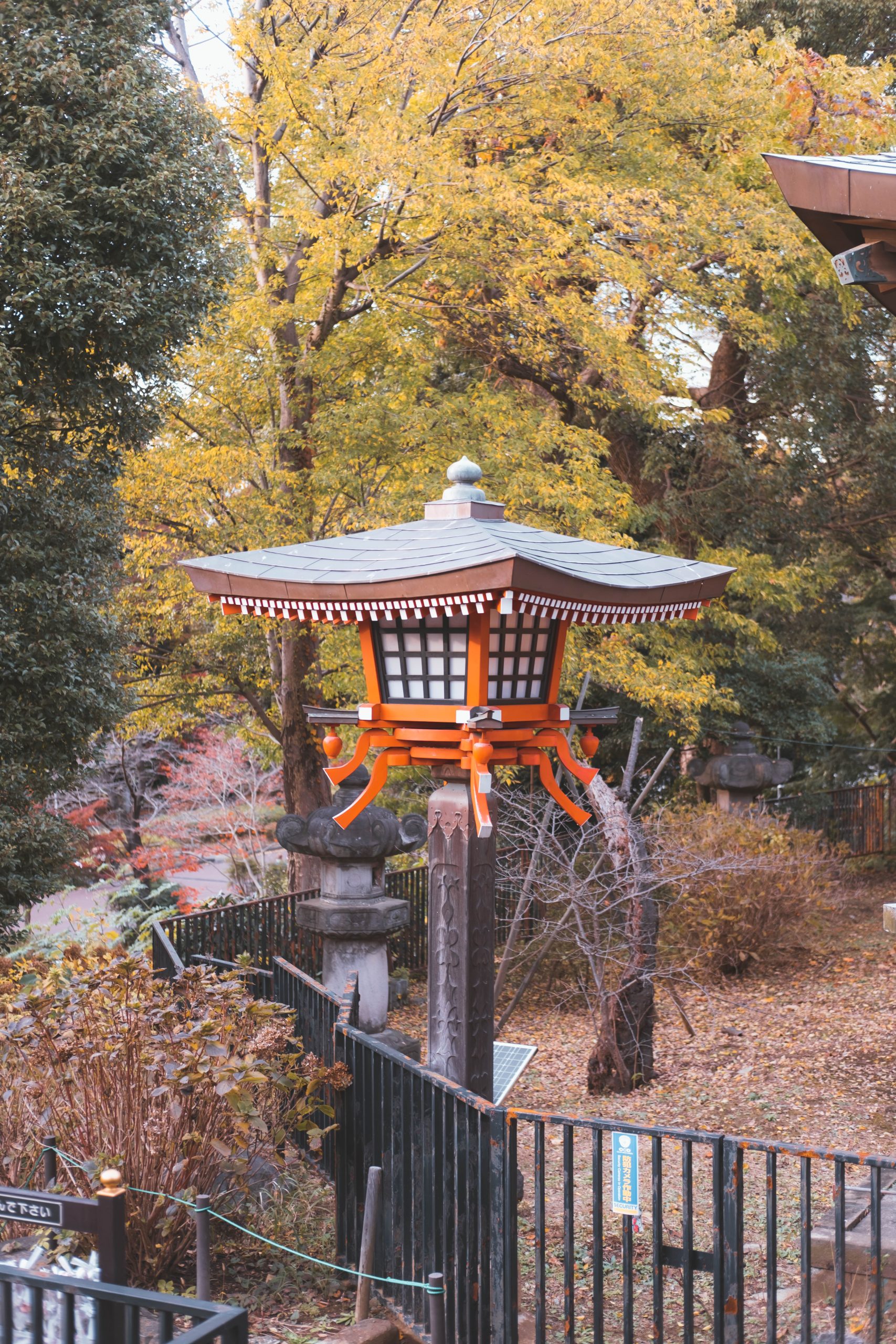
Just a couple of minutes walk from the pond, turn right onto the small path that leads towards the Hanazono Inari Shrine. Don’t approach from the Gojo Bridge, as you will miss the best part. Walk up to the entrance marked by three red wooden lanterns and a large concrete torii. You will immediately see the Inari Slope, guarded by two stone lions, and the red gates lining the path to the shrine.
At sunset, the path, and the gates are illuminated, but keep in mind that the shrine closes at 5pm.
Look for the Moon at Kiyomizu Temple
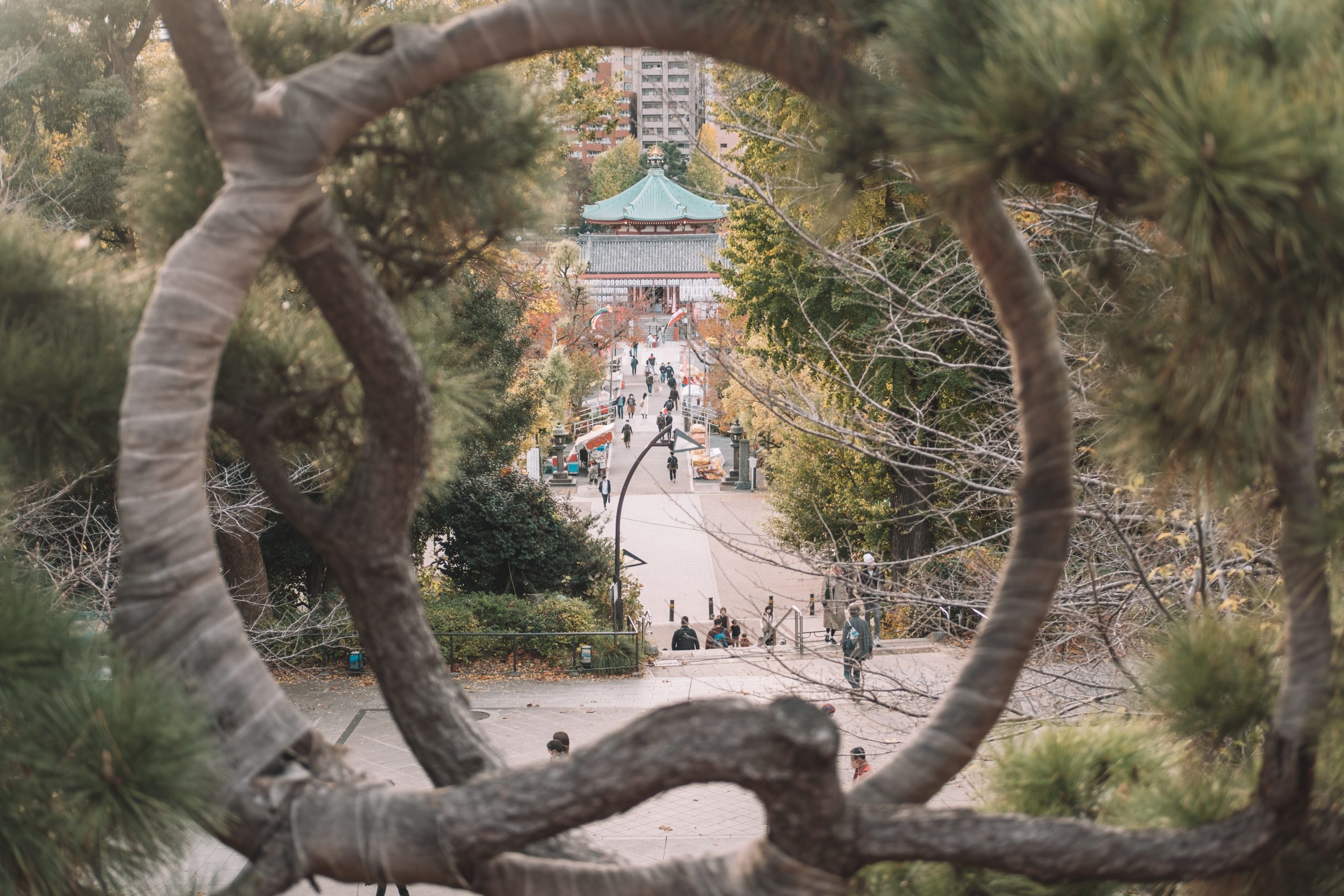
This was originally part of Kaneiji Temple. Its design was inspired by Kyoto’s Kiyomizudera. The temple is dedicated to Kosodate Kannon, the goddess of conception, which makes it a popular destination for pregnant women and couples seeking blessings for fertility and healthy childbirth. Visitors come to the temple to pray, make offerings, and receive amulets for a safe pregnancy and delivery.
The temple’s unique features is its platform overlooking the Shinobazu Pond, providing a stunning view of the surroundings and allowing for reflection and connection with nature. An important thing to see in Ueno, don’t miss the pine tree known as the “Pine Tree of the Moon” or “Tsuki no Matsu”. The tree, shaped as a circle, frames the moon when it’s full, creating a mesmerizing sight. Although the original pine tree was destroyed by a storm, a new tree was planted in 2011 to continue the tradition.
Travel back in time at the Toshogu Shrine
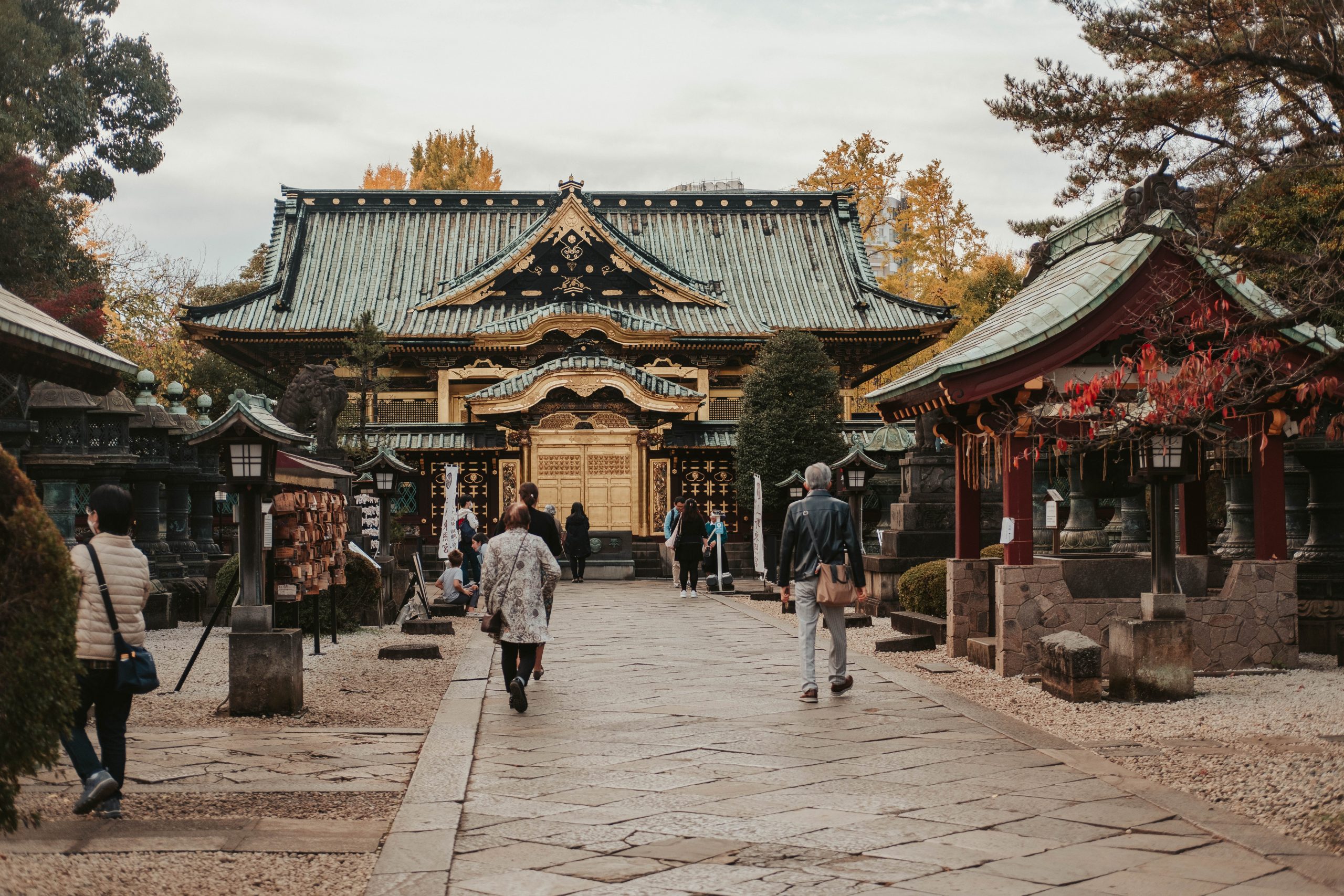
Ueno Toshogu Shrine is a survivor, one of the few Edo-era structures to have survived Tokyo’s many earthquakes and wars.
First established in 1627 and later renovated in 1651, the shrine has remained mostly intact since then. As you explore, marvel at the outstanding example of Shinto architecture from the Edo Period that Ueno Toshogu Shrine represents.
During the cherry blossom season in the spring, the pathway leading to the shrine is lined with beautiful cherry trees. The blossoms create a breathtaking tunnel of pink and white flowers, making the shrine a popular spot to enjoy hanami.
Find your luck at Bentendo Temple
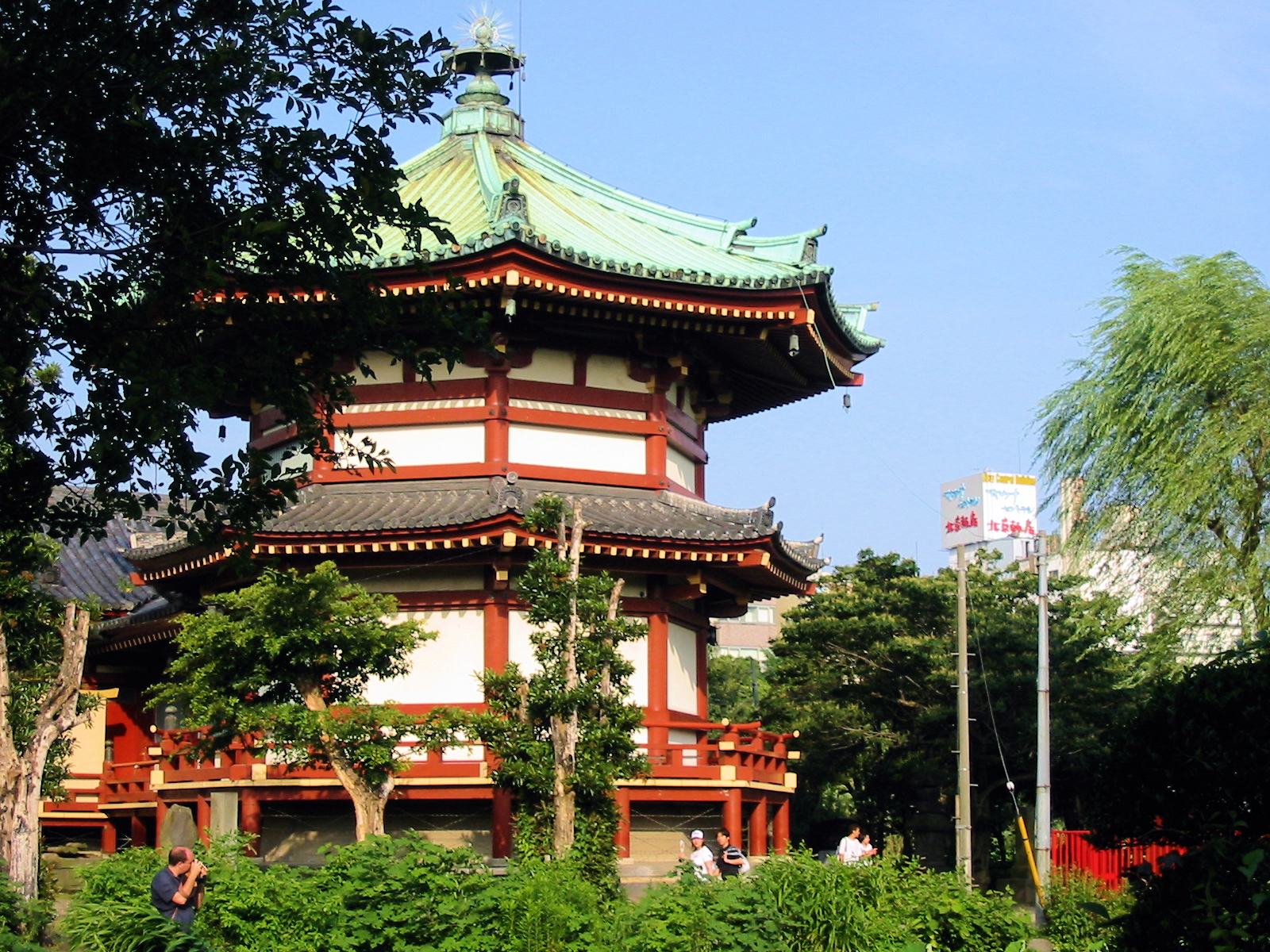
This great temple is located on an island in the Shinobazu Pond. The temple is dedicated to Benten, the goddess of good fortune and knowledge. This octagonal temple is not only an architectural marvel, but also a spiritual haven for visitors seeking blessings and serenity.
Bentendo Temple was built on the island because of the belief that Benten was originally the personification of a river, symbolizing her connection to water.
During the cherry blossom season, the bridge, and the temple grounds are packed with street food stalls and other vendors. It’s a good place to try some yummy Japanese street food.
Rent a swan shaped pedal boat at Shinobazu Pond
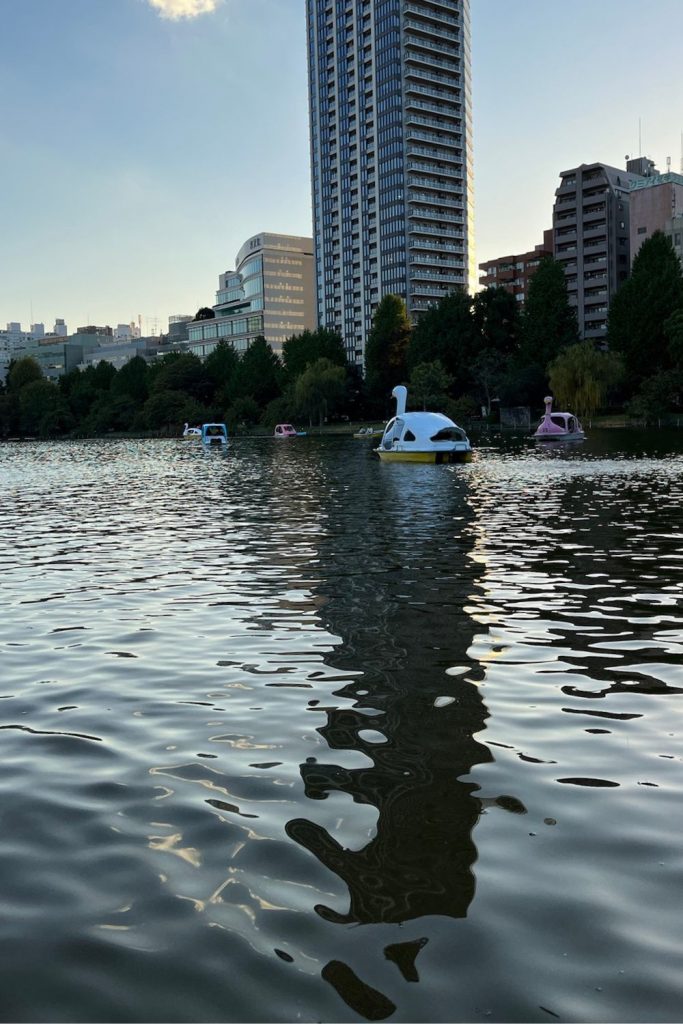

We loved sunbathing right by the Shinobazu Pond. The pond is partly covered in lotus and during the summer months (mid-July to mid-August) these plants bloom, providing a breathtaking sight and a perfect photo opportunity, making the pond a number one Ueno tourist spot. If you’re in the mood for some extra fun, rent one of the swan shaped pedal boats and explore the pond’s calm waters.
Visit the Pandas and Polar Bears at Ueno Zoo
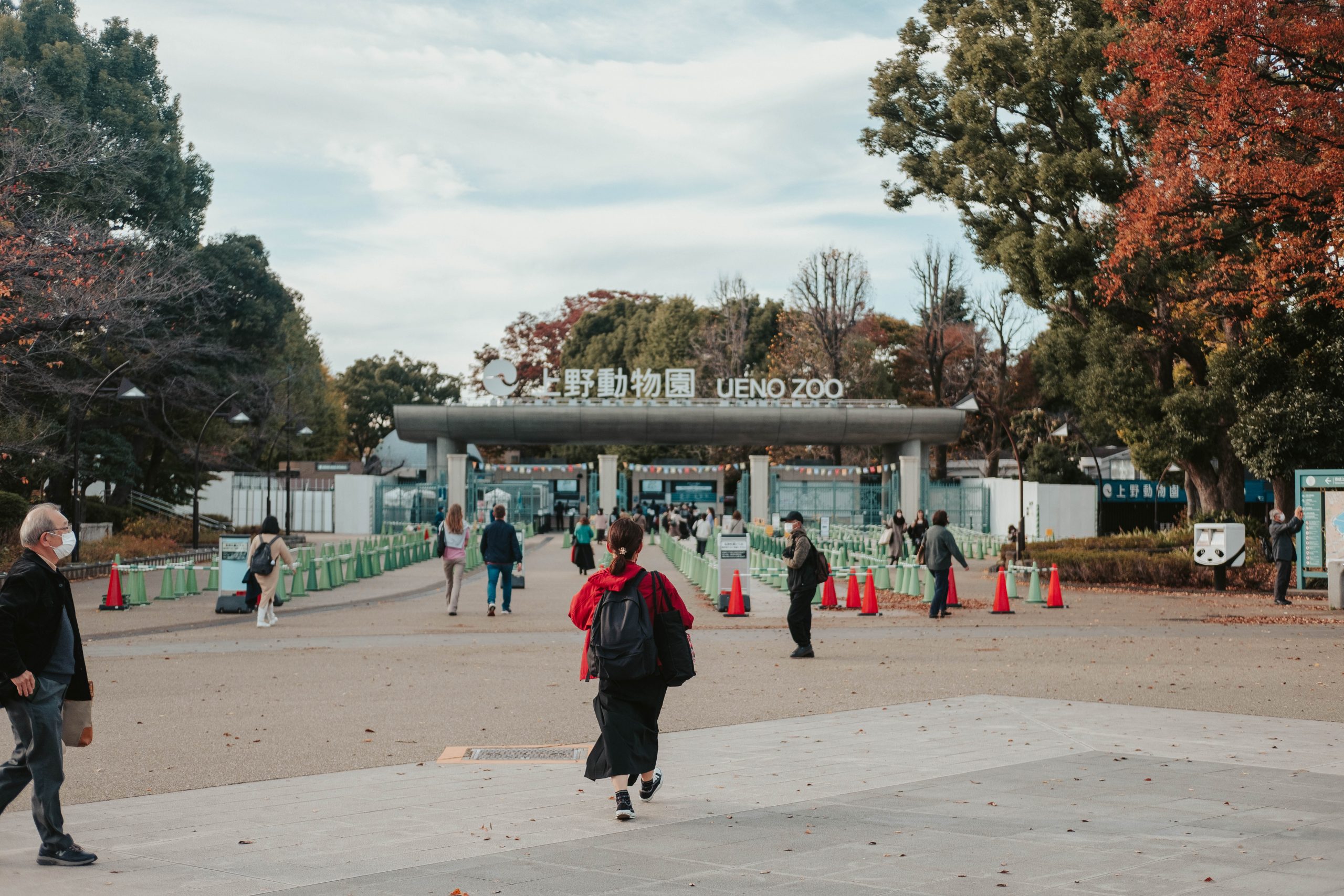
This is Japan’s oldest zoo, and it’s most sought after residents are the giant pandas, first brought here in 1972. In 2011, the Ueno Zoo received two new baby pandas. The admission fee is 600 yen and totally worth it if you ever want to see a cute panda or a beautiful polar bear.
The Zoo is one of the top Ueno attractions, and it’s a great place to visit for families. You can easily spend 2-3 hours in the zoo. The Eastern Garden has giant pandas, polar bears, snow owls, elephants, and monkeys; and the Western Garden, that houses red pandas, hippopotamus, rhinoceros, and crocodiles – and many more animals.
Step back in time at the Shitamachi Museum
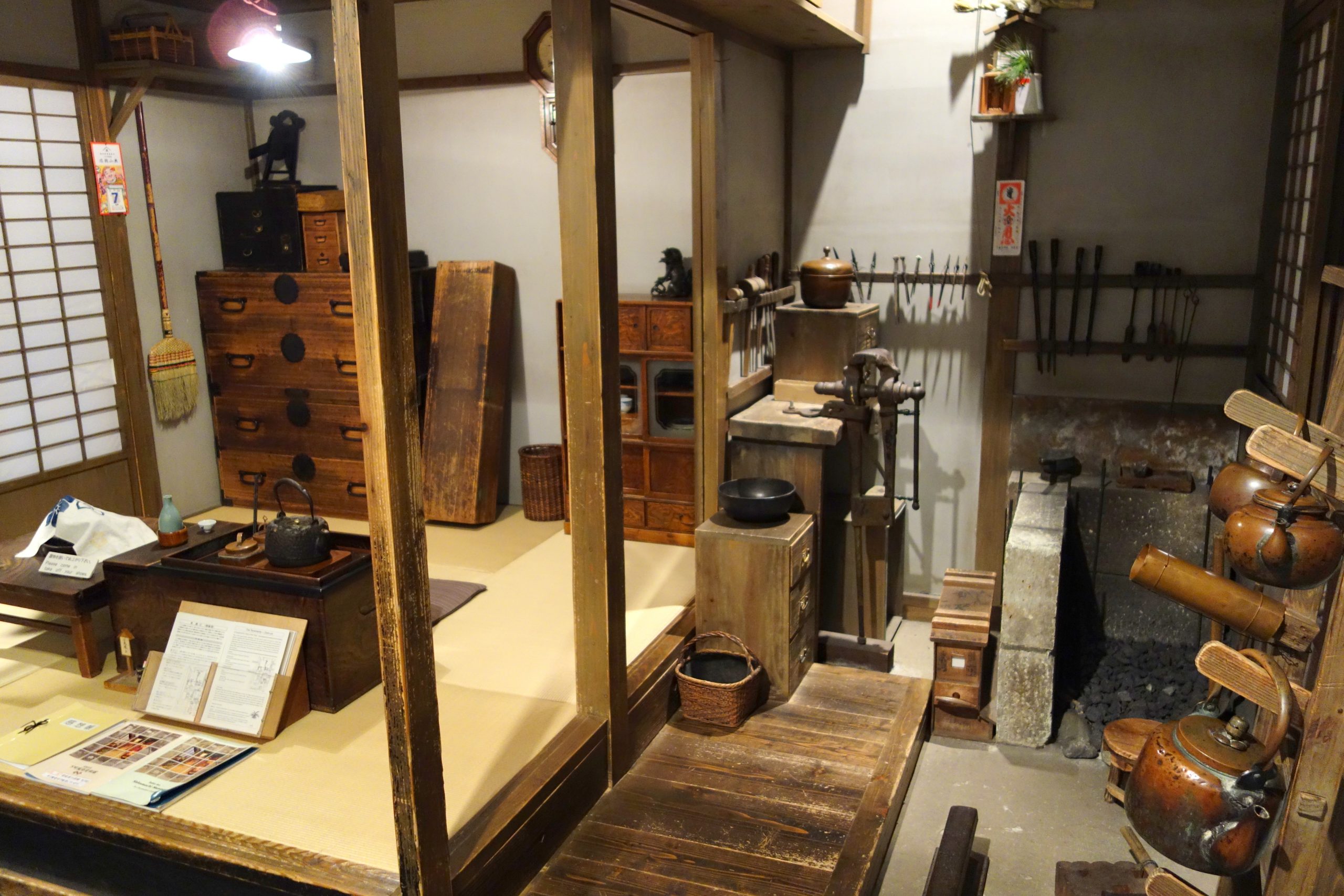
Note, the Shitamachi Museum is temporarily closed because it is undergoing renovation work. It will reopen at the end of 2024.
This is a brilliant opportunity to step back in time and experience what life was like in Tokyo during the Meiji and Showa periods. Admission is only 300 yen. You will see many original artefacts here, and it is rather interesting to be able to see how old Tokyo looked liked.
Shitamachi means “Low City”. Although not necessarily depicting the lives of the poor, it is primarily about Edo’s lower classes including craftsmen, fishermen, merchants. If you want to experience a little of the old Shitamachi, you can visit Asakusa. Many streets in Asakusa have preserved old buildings from this period.
Wander around the Ameyoko Shopping Street
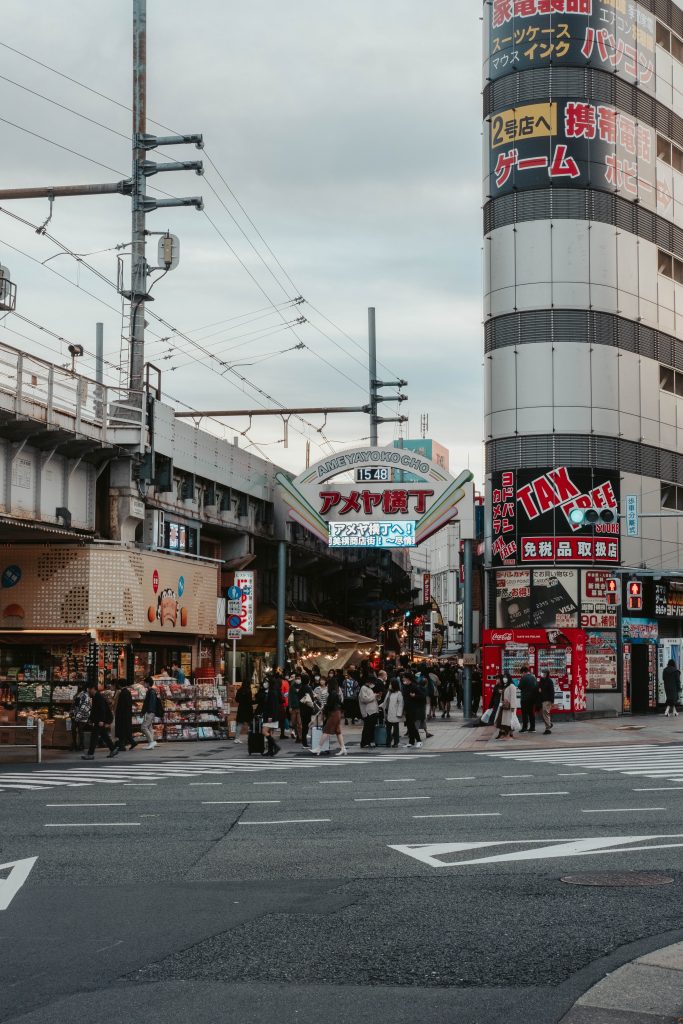
Ameyoko, short for “Ameya Yokocho”, is a lively market street. You will find it between Okachimachi and Ueno stations along the Yamanote Line. Once you exit the park (or the Ueno Station) cross the main street and take any of the small street.
Ameyoko retains its “shitamachi” atmosphere (see above), characterized by a slightly untidy, commercial, and crowded environment. It has over 250 shops, and you can find a wide range of products, including clothes, bags, cosmetics, fresh fish, dried food, and spices. The market is particularly busy during late December, when locals buy ingredients for traditional Japanese New Year foods.
Its name has two possible origins: “Ameya” (candy store), as candies were traditionally sold here, or “America,” as the street once hosted a black market for American products after World War 2.
View Cherry Blossoms at Ueno
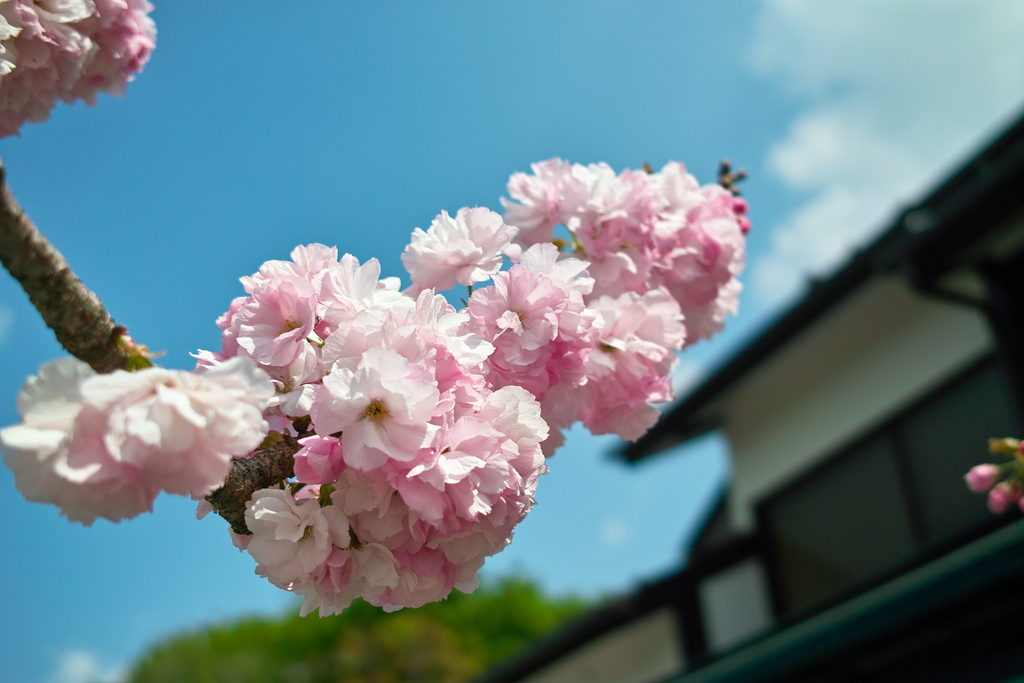
Home to over 1000 cherry trees, Ueno Park is one of Tokyo’s best spots for hanami. The cherry blossom season is usually from late March to early April and attracts tourists from all over the world. If you are lucky enough to visit Tokyo at this time, bring a blanket with you to Ueno and take a break under a cherry tree.
If you want to enjoy the true hanami experience, pack food and pick a lovely spot as early as possible. The whole park really comes to life at night, when the trees are illuminated and people bring lanterns, food and hang out together while marvelling at the beautiful flowers.
To find out when is the best time to visit Ueno Park to see the flowers, check out our cherry blossom forecast article.
Visit More Museums
National Museum of Western Art
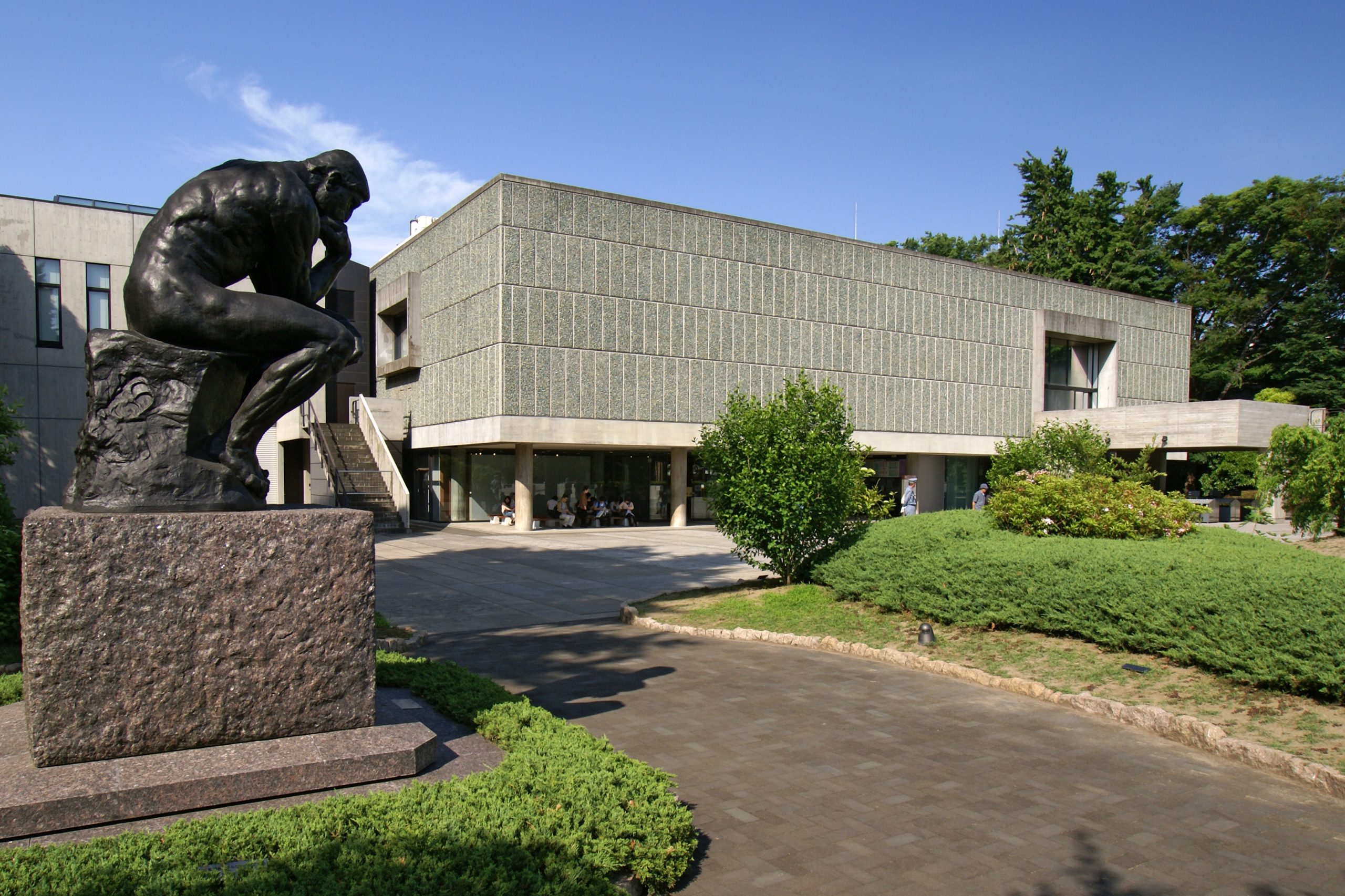
Visiting the National Museum of Western Art is a great opportunity to check out Western art whilst in Japan. The exhibitions mainly focus on European artists. The museum also hosts temporary exhibitions. The entrance fee is 420 yen.
The building itself is considered a UNESCO World Heritage Site, it was established in 1959, and it is home to three important pieces of the Rodin sculpture collection. Outside you will see the Thinker and the Gates of Hell.
National Museum of Nature and Science
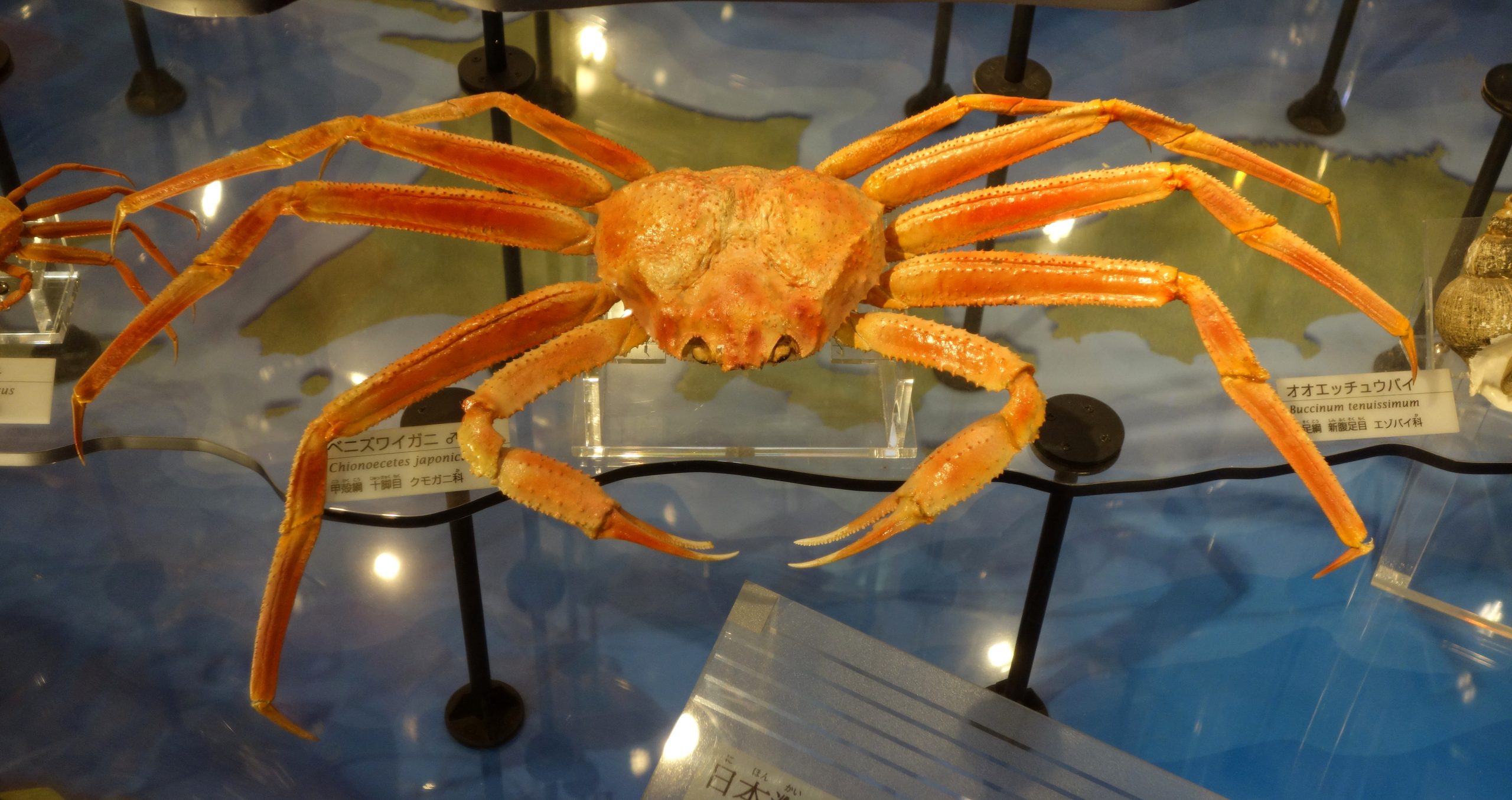
If you are passionate about science or natural histories, then I strongly recommend visiting the National Museum of Nature and Science. You will find a collection of mounted animals and a lot of hands-on experiences. It’s really captivating and interactive. The admission fee is 620 yen.
The museum focuses on the evolution of life on our planet and expect a comprehensive display to cater to science minds. It’s a great thing to do in Ueno for families with kids.
Best hotels near Ueno Park
There are many incredible places to stay in Tokyo and Ueno Park is one of them. Although a little further away from other attractions, Ueno Park is a great area for accommodation as it is close to subway and train lines. It is also a quiet and relaxing area, and sometimes you can find affordable accommodation if you wish to do Tokyo on a budget.
In the 4-star MIMARU TOKYO UENO INARICHO hotel the rooms are fitted with air conditioning, a fridge, a microwave, a kettle, a bidet, free toiletries and a desk, a private bathroom a shower and a hairdryer.
Ideally situated across the street from Ueno Park, NOHGA HOTEL UENO TOKYO features air-conditioned rooms, a fitness centre, a restaurant, and a terrace. All rooms in the hotel are fitted with a flat-screen TV, a kettle, while selected rooms also have a kitchenette with a fridge, a microwave, and a toaster.
Grids Tokyo Ueno is a 3-star hostel located in a prime location in Tokyo, offering air-conditioned rooms, a shared lounge, free WiFi, and a bar. It features a shared kitchen and a 24-hour front desk, and provides à la carte and continental breakfast options daily.
Ueno Park Guide Map
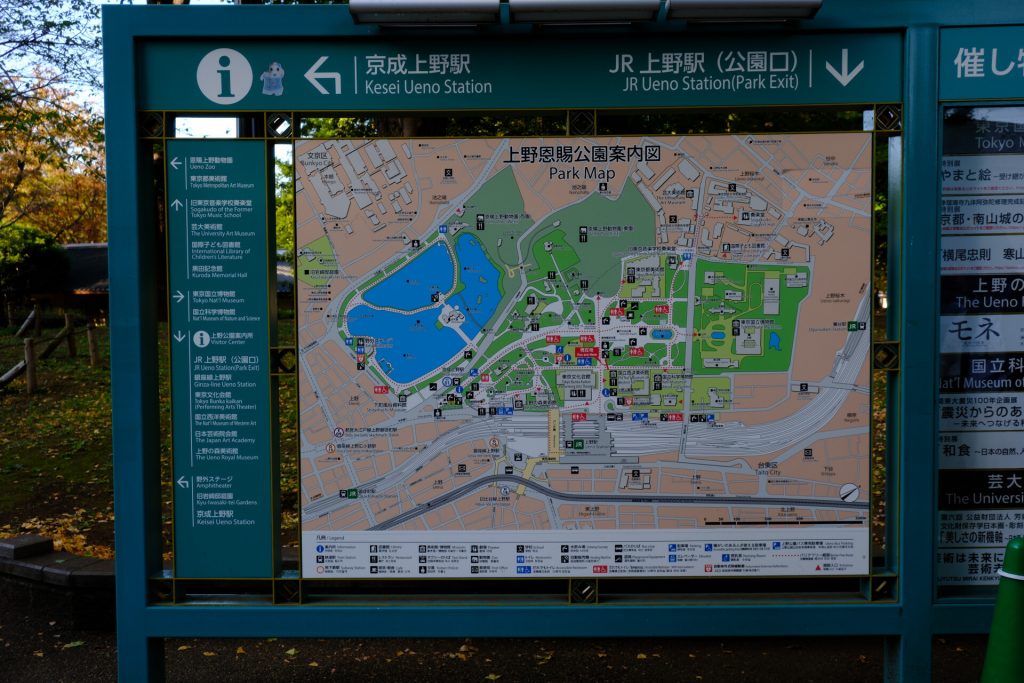
Ueno Park is very large, it’s easy to get confused or miss important attractions. You can download the Ueno Park Guide Map in PDF format.
Frequently Asked Questions
Is Ueno Park worth a visit?
Yes, absolutely, Ueno is worth visiting! The park is home to several museums, temples, shrines.
The best places to visit in Ueno include the Tokyo National Museum, the National Museum of Nature and Science, the Ueno Zoo, the Shinobazu Pond, and the Toshogu Shrine.
Ueno Park is also known for its stunning cherry blossom trees, which bloom in the spring between March and April.
Why is Ueno famous?
Ueno is famous for several reasons, including:
It’s one of the largest and most popular public parks in Tokyo
It’s home to several famous museums, including the Tokyo National Museum, which is the largest museum in Japan
The Ueno Zoo is one of the oldest and most famous zoos in Japan is within the park
No 1 Hanami Spot – 1000s of cherry blossom trees bloom in the spring
How long to spend in Ueno?
How long you will spend in Ueno depends on what you want to do. Usually, most people spend about 2 hours in the park.
To visit the museums, it takes at least 3-4 hours
To visit all the temples, it takes about 2 hours
The Ueno Zoo takes about 3 hours
Boat ride on the pond, 1 hour
As you can see, the Ueno Park can be a whole day. When we visited the first time, we spend 4 hours in the park, but did not enter the Zoo or any of the museums. Next time we visited, we spend 3 hours in the TNM alone. When people come to see the cherry blossoms in the evening, they spend about 2-3 hours eating, drinking under the trees.
What is there to do in Ueno at night?
The park is open 24/7, after sunset, the main areas are well light, and you will see many people walk or run, even late at night. Museums close after 5pm-5.30pm.
You can visit Ameyoko Market Street and hunt for bargains, or sit down for a drink and some tasty food at the countless izakaya spots.
If you are visiting during the spring Sakura Season, come and see the illumination in the park. It’s wonderful to walk around and marvel at the cherry blossoms.
Visiting Tokyo soon? These articles will help you plan the perfect trip.
- Where to Stay In Tokyo
- The Ultimate Guide to Tokyo
- Best Places to visit in Tokyo
- Tokyo Restaurants Guide
- Best Tokyo Street Food
- The Best Spots To See Tokyo From Above
- Best Day Trips from Tokyo
Give us a shout in the comments below if you have any questions.

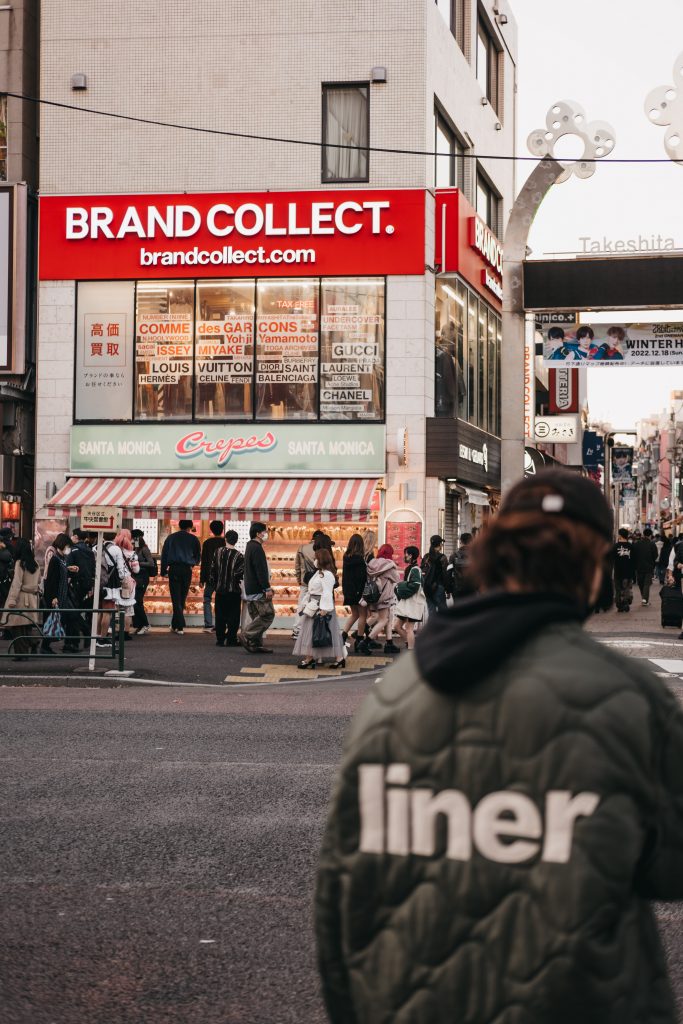
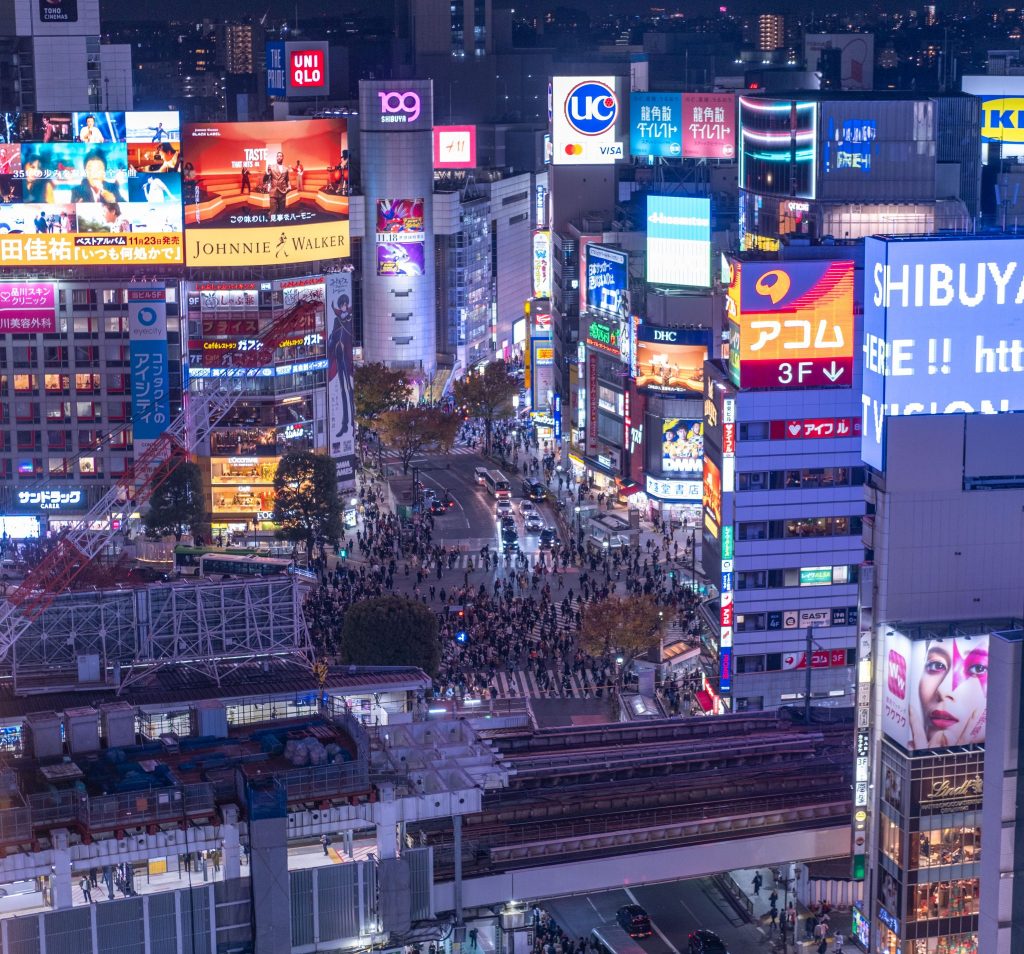
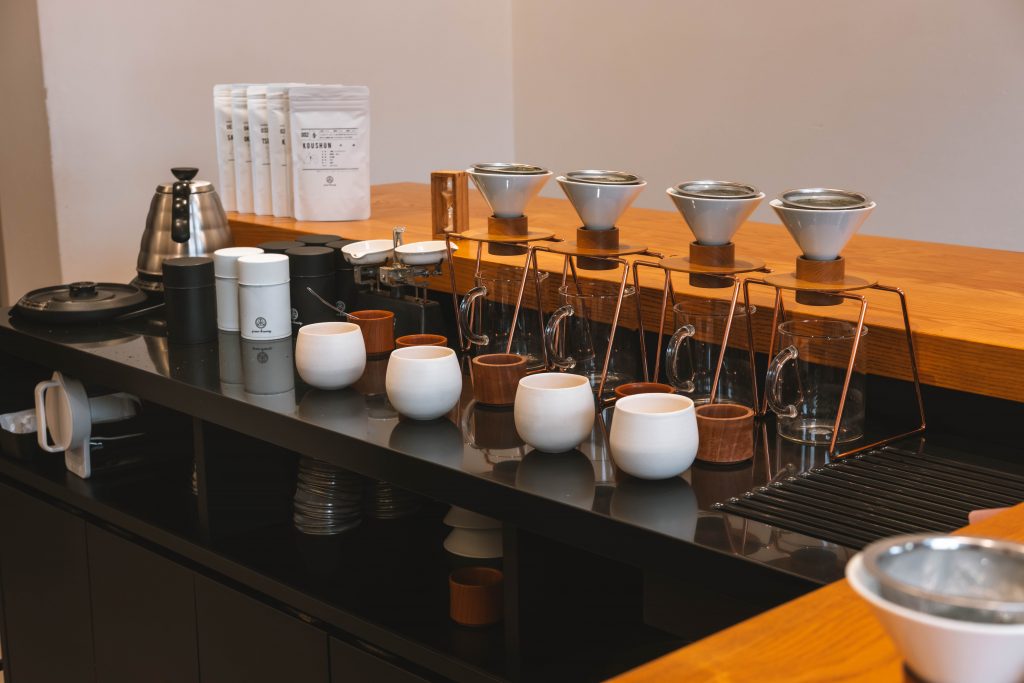
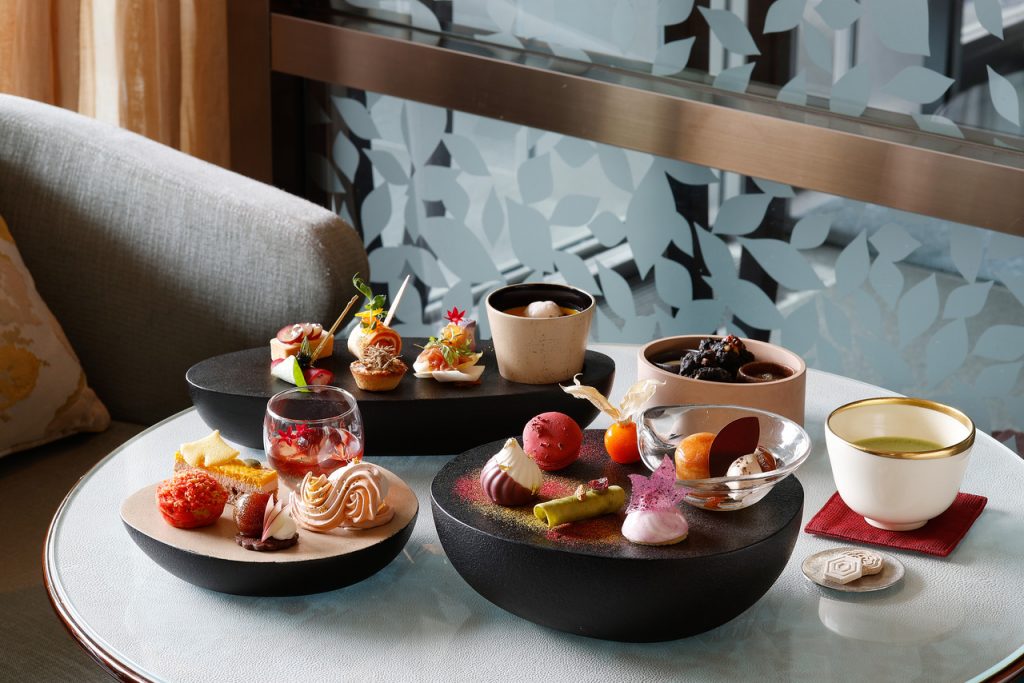
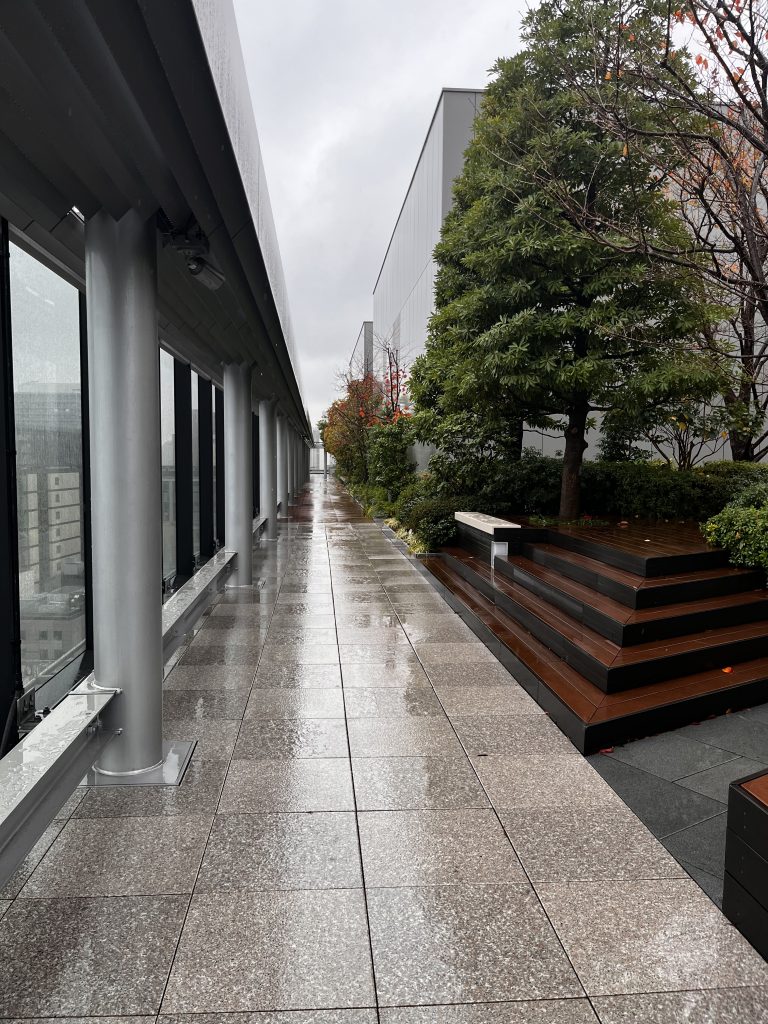
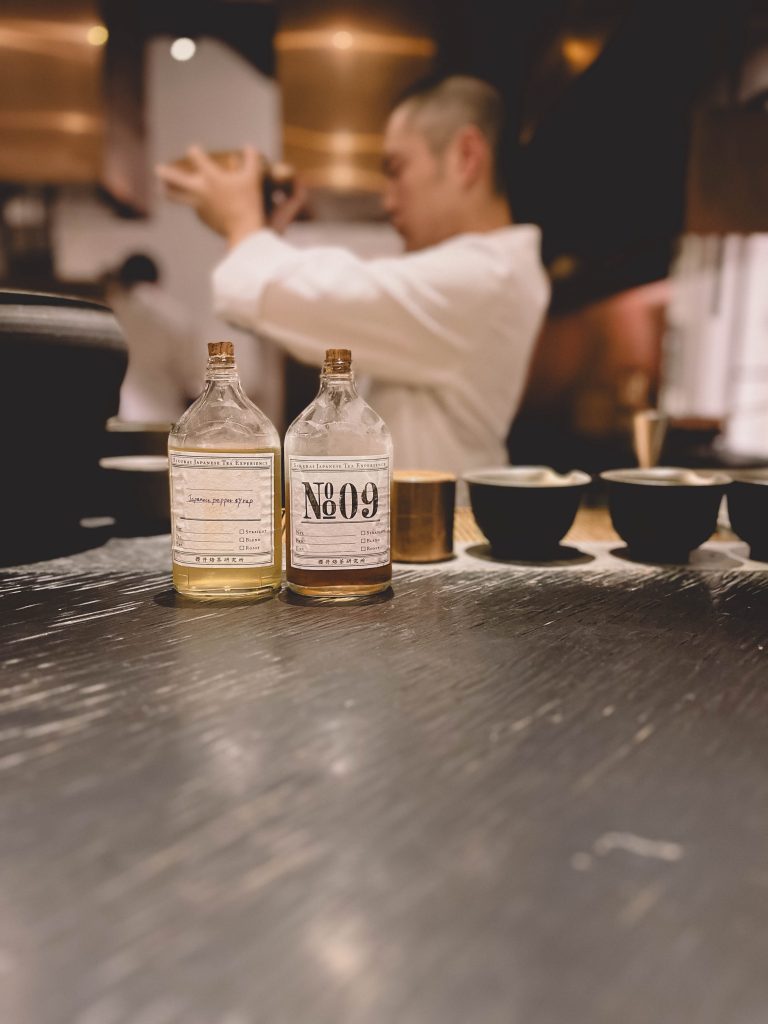
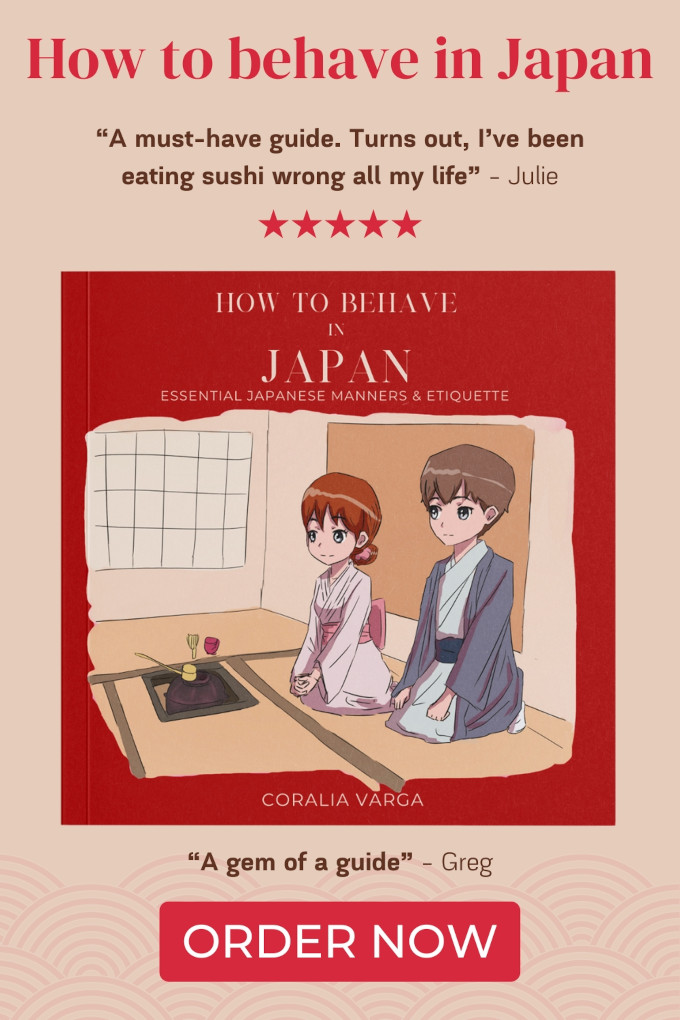

Leave a Reply